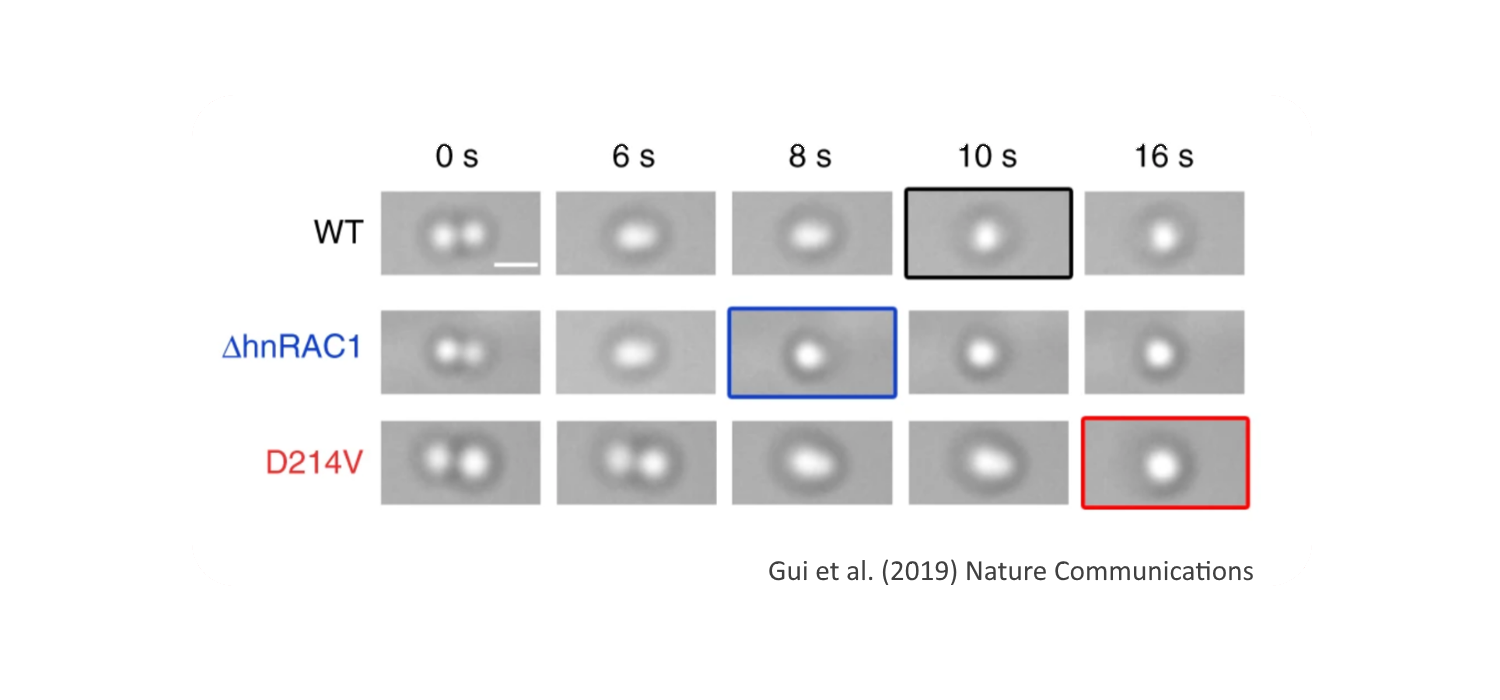Two new papers published at Physical Review Letters and Nature Communications give new insights on protein droplets. Congratulations to all the authors!
Jawerth et al. developed a method to investigate the frequency-dependent rheology and surface tension of protein droplets. They used the C-Trap™ optical tweezers – fluorescence microscope to trap a protein droplet consisting of PGL-3 condensates and measure its material properties. Their findings show that protein condensates exhibit viscoelastic material properties which can be regulated by tuning the salt concentration.
In the second article, Gui et al. investigated how hnRNPA1 contributes to cellular compartmentation under cellular stress and illuminated the functional role of reversible amyloids in the assembly of stress granules. They combined optical tweezer measurements, using LUMICKS’ C-Trap™, and FRAP measurements to monitor the fusion of wild-type hnRNAP1 droplets and two of their mutants. Their results showed that reversible fibrils affected the fusion of the droplets and reinforced hnRNAP1 phase separation, indicating that reversible fibrils play an essential role in the assembly of stress granules.
The C-Trap™ Optical Tweezers – Fluorescence Microscopy used in these papers is made commercially available by LUMICKS. Are you interested in using the instrument for your own research? Please feel free to contact us for a demo or quote.



